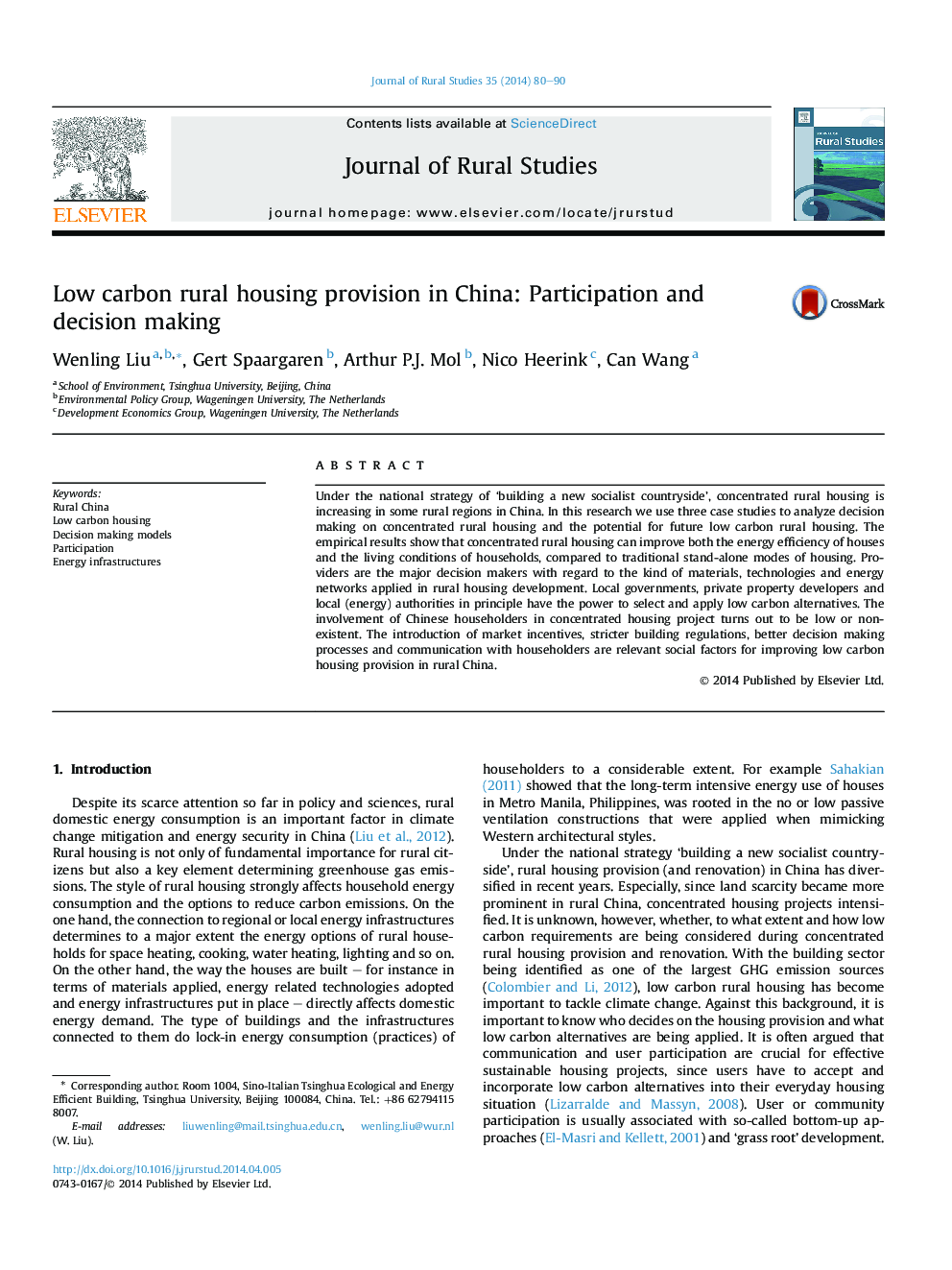| Article ID | Journal | Published Year | Pages | File Type |
|---|---|---|---|---|
| 92487 | Journal of Rural Studies | 2014 | 11 Pages |
•Three modes of rural housing provisioning in China are identified.•Concentrated rural housing results in an energy and carbon efficiency improvement.•Providers are major decision makers on applying low carbon housing options.•Householders hardly play a role in decision making on low carbon housing options.•The potential for low carbon rural housing is with wider involvement of actors.
Under the national strategy of ‘building a new socialist countryside’, concentrated rural housing is increasing in some rural regions in China. In this research we use three case studies to analyze decision making on concentrated rural housing and the potential for future low carbon rural housing. The empirical results show that concentrated rural housing can improve both the energy efficiency of houses and the living conditions of households, compared to traditional stand-alone modes of housing. Providers are the major decision makers with regard to the kind of materials, technologies and energy networks applied in rural housing development. Local governments, private property developers and local (energy) authorities in principle have the power to select and apply low carbon alternatives. The involvement of Chinese householders in concentrated housing project turns out to be low or non-existent. The introduction of market incentives, stricter building regulations, better decision making processes and communication with householders are relevant social factors for improving low carbon housing provision in rural China.
